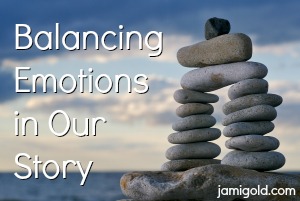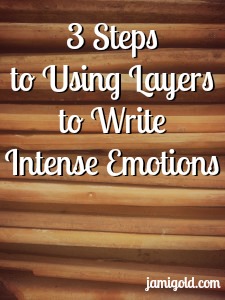There’s never going to be a ‘one size fits all’ guideline for any aspect of writing. Every story is different, so some advice doesn’t apply to us. What’s right for one genre might not be right for another genre. Ditto for the point of view of the story. Or the characters. Or the plot.
Pin It
Read More
The ability to manipulate our readers’ emotions is a good thing (as screwed up as that sounds). Storytelling and keeping readers’ interest often comes down to creating emotions in our readers. So let’s take a closer look at how we create emotions in our readers and how we find the right balance.
Pin It
Read More
Many stories “strike out” with readers in the first chapter. So our opening pages are just as critical to sales as our book cover, title, back-cover blurb, etc. Let’s take a closer look at cliches to avoid and tips to make those pages work for us.
Pin It
Read More
If we want our protagonists to seem heroic, they need to have strong traits. Yet at the same time, if we want our protagonists to be relatable, they need have vulnerabilities. This is never an easy balance, especially when clichés fill our heads about what a “strong character” means.
Pin It
Read More
USA Today bestselling author Mary Buckham is back with Part Two of her guest post on writing active settings that keep our story flowing and connect readers to our characters. Today, she’s sharing the second biggest hurdle to writing great descriptions.
Pin It
Read More
The trick to sharing setting information (which our readers do need) without dragging down the pace is to write active descriptions. Active descriptions let the reader imagine the setting in their mind, keep them anchored in the story, and slip in information so seamlessly that they never realize they’re reading descriptions.
Pin It
Read More
As I mentioned with the worksheet I shared last week, it’s often easier to work backward when we’re framing our story. At the very least, knowing the ending often makes it easier to see our character’s arc.
Pin It
Read More
A “numb” reaction isn’t unusual for dark or deep emotions. In fact, it’s probably fairly normal. But it makes writing the scene more difficult. How do we show numb and deep emotions at the same time? How can readers connect to an emotionless character?
Pin It
Read More
At their essence, most sports have a lot in common with storytelling. There are “good guys” (the home team) and “bad guys” (the visiting team), and they battle for who comes out on top. The audience becomes emotionally involved and roots for those they identify with to succeed, and we […]
Pin It
Read More
When starting a revision, we often struggle to see the underlying issue to know how to fix it. Do we need to change the plot? The characters? Both?
Pin It
Read More










